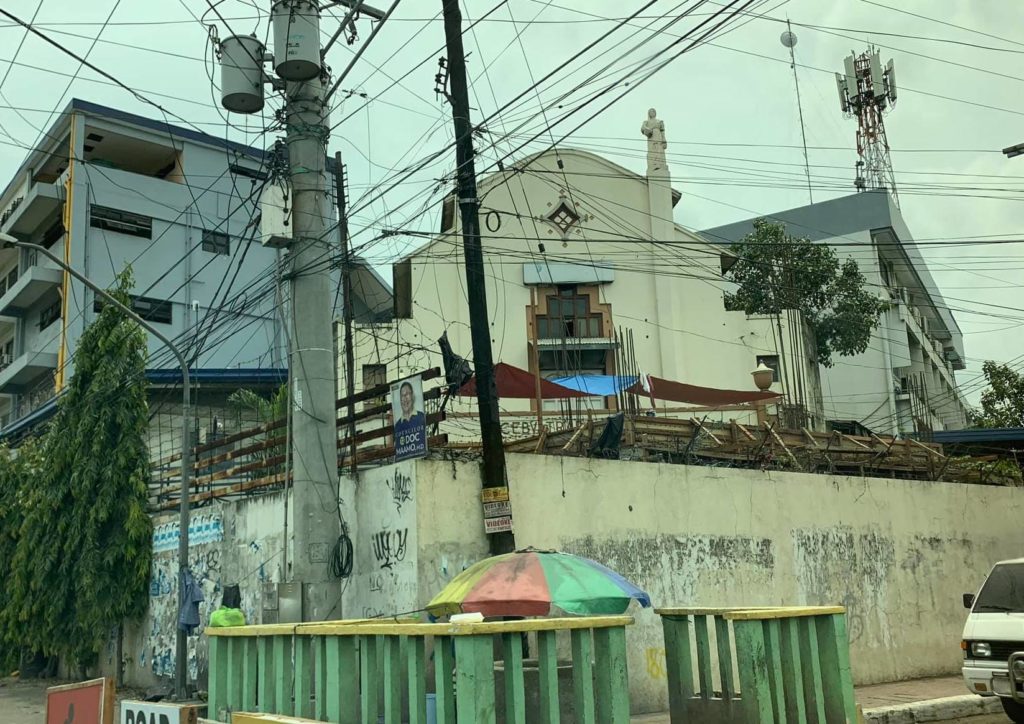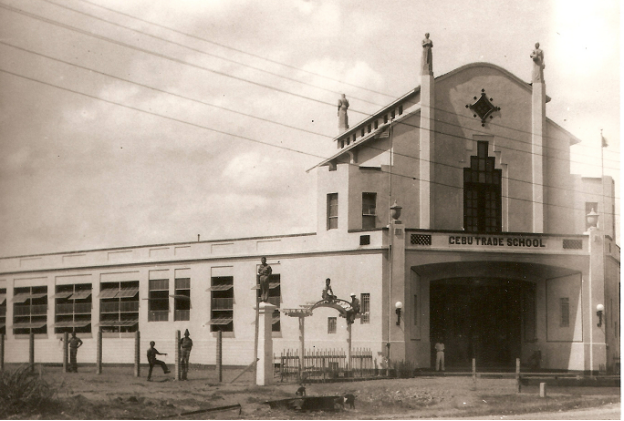CTU’s hidden gem needs to be exposed again

The Cebu Technological University (CTU) traces its origins to the previous century, right at the beginnings of American colonial rule in Cebu. Trade schools, designed to teach domestic as well as commercially viable arts and crafts, were introduced early on in strategic centers of the Philippines, Cebu being one of them.
Originally part of the public high school system, a distinct campus finally appeared by the late 1920s with the construction of the Cebu Trade School Building near the waterfront, a neoclassical structure with each column on its façade topped by a distinct statue representing human symbols of the arts and trades—a very unique and valuable architectural heritage in Cebu akin to the Cebu Capitol.
Despite the ravages of war, it still stands today at the corner of Rafael Palma Street and Arellano Boulevard, forming one of two distinct architectural gems, the other being the Yap Anton Warehouse across, also dated to the late 1920s.

The Cebu Trade School with its expansive wings of classrooms still intact, from the 521-page book “Cebu-Visayas Directory” by A. Camasura, published in 1932. (courtesy, USC Cebuano Studies Center)
Unfortunately, unlike the latter, the former is barely visible to those outside the campus, more so probably to those inside as it faces away from all the buildings within. The development of the Cebu Trade School into the Cebu School of Arts and Trades and then into the Cebu State College of Science and Technology (CSCST) and eventually into a university, has also translated into a fast-paced transformation of its once-expansive campus.
Today, the old Cebu Trade School Building of the pre-war period, with its distinctive architecture and unassailable role in training thousands of youths in the pre-war period, is tucked at the corner almost forgotten by the public.
I happened to pass by Rafael Palma Street on my way to the SRP subway tunnel the other day when I noticed new construction in front of this historic structure. A quick post on my Facebook page elicited a response from one of my former archaeology students now teaching at CTU. He reported that this unwelcome intrusion was halted last August 5 on orders of the university board.

The pre-war Cebu Trade School Building with new construction in front. The building is now hidden by a high perimeter wall. A deep well used by locals outside also mars the view.
This late in the heritage movement in Cebu, I wonder why there are still people who remain unaware of RA 10066, the National Cultural Heritage Law, and the need to respect heritage structures by not defacing, disrespecting or obstructing them with new buildings. Whoever decided to put up this new structure clearly never read or watched the news regarding the Capitol Resource Center. (Now thankfully canceled by Gov. Gwen Garcia, it would have forever impacted on the heritage value, significance, and integrity of the Cebu Capitol.)
Or maybe they thought they could get away with it since this structure is almost invisible to the public? You see, someone decided in the recent past to put up a very high cement concrete perimeter fence to cordon off the entire CTU campus. This resulted in a heritage sacrilege of sorts: this architectural wonder was effectively hidden by a kind of ‘Berlin Wall’ as a result.
I urge the present administration of CTU to rethink the way its predecessors have treated this historic edifice. Many cities and towns in the country are scrambling to look for evidences of the past and would gladly give anything to have a building of this caliber.
Now, I understand that there is supposed to be a museum at the second floor of this venerable edifice. If indeed true, then CTU should be lauded to this smart move. But the more important thing to do should be to expose this structure once more to the Cebuano public. Why not tear down the section of the perimeter wall that has forever marred this edifice and replace it with iron grilles? This way, it can be fully appreciated by the public. And in so doing, please also do something about the well that the people living outside use just a few meters from this edifice.
This building deserves the same respect given to, say, the Cebu Capitol, the Cebu Normal School, and the Cebu City Library, three other contemporaneous government buildings.
Not even the University of San Carlos, which traces its history to the early Spanish period, has any building older than 1947 as a result of World War II. Oh what USC would give to preserve and celebrate a historic edifice of this vintage, if only it had one like this building.
So what’s it gonna be, CTU?

Another pre-war photo photo of the building, giving us a glimpse of how it would look if the high perimeter wall and the new construction are removed. (courtesy, USC Cebuano Studies Center)
***
Today is National Heroes Day and to mark the event, Museo Sugbo, the Central Command of the Armed Forces of the Philippines, the Department of Education and the Talisay City Government will inaugurate a traveling photo exhibit entitled, “Proud Sugbuanons, Descendants of Heroes.” The exhibit highlights images and a brief bio of Cebu’s local heroes together with photos of the streets named after them. This event will be held at the Talisay City Hall at 10 o’clock in the morning with Mayor Samsam V. Gullas and CentCom Commannder Lt. Gen. Noel S. Clement gracing the occasion. I hope to see you all there. The exhibit will go the rounds of many schools in Metro Cebu courtesy of CentCom. It is time the youth understand why streets are named after these heroes and what they did so that all of us can still use these very same streets today, free from foreign oppressors.
Disclaimer: The comments uploaded on this site do not necessarily represent or reflect the views of management and owner of Cebudailynews. We reserve the right to exclude comments that we deem to be inconsistent with our editorial standards.
